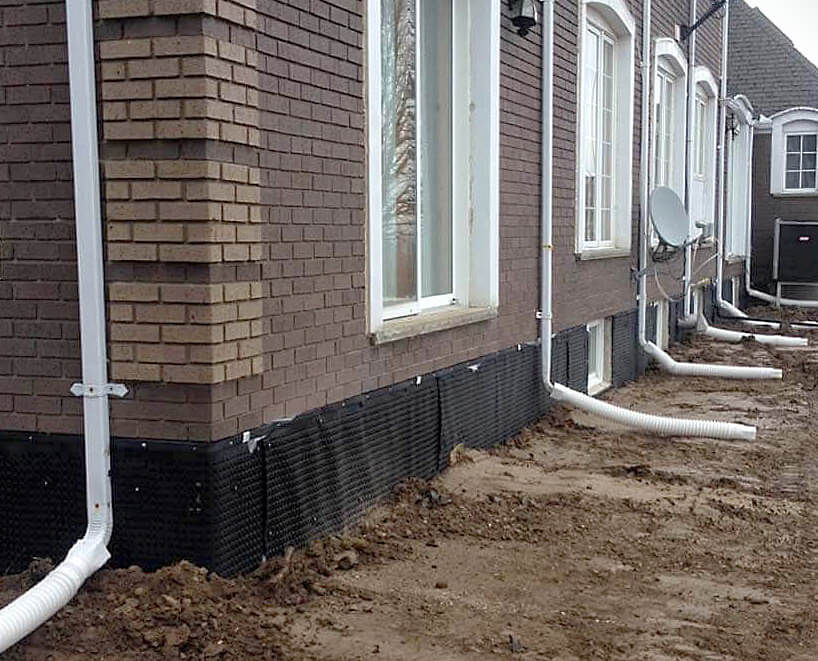Ultimate Guide to Basement Waterproofing in the GTA: Protect Your Home from Water Damage
- contact730854
- Sep 5, 2025
- 4 min read
Ever wondered what really goes into basement waterproofing? The answer isn’t always pretty—but it’s necessary. From digging trenches to stabilizing walls, basement waterproofing is a hands-on process that protects one of your biggest investments—your home.
For homeowners across Toronto and the GTA, water infiltration is a year-round concern. Whether from rainfall, snowmelt, or poor grading, moisture can quickly become your home's worst enemy.
Why Basement Waterproofing Matters in the GTA
Toronto’s wet seasons, aging housing stock, and shifting soil create the perfect recipe for foundation trouble. Hydrostatic pressure, freeze-thaw cycles, and improper drainage systems only accelerate the issue.
When water collects around the base of your home, it doesn’t just sit there—it seeps into pores, weakens structural integrity, and can cause long-term damage. Basement waterproofing is more than a fix—it's preventative home protection.

Real-Life Walkthrough: What Happens During a Basement Waterproofing Job
In a typical waterproofing project, a trench is dug along the interior or exterior perimeter. Gravel is laid down, followed by a drainage system that routes water to a sump pump pit. Over that, another layer of gravel is added, and everything is sealed with concrete.
Moisture barriers are then installed on the interior walls to direct water through weep holes into the drainage system. It’s a thorough process, one that ensures water has no chance of penetrating your home’s interior space.
Signs Your Basement Needs Waterproofing
Small or hairline foundation cracks
Damp spots or moisture discoloration on concrete blocks
Pools of water or musty odors
Settled concrete slabs around the home’s exterior
Walls bowing or showing signs of stage 1–4 failure
Even a tiny crack can signal a deeper issue. Catching these signs early can prevent a much more costly repair down the road.
Top Basement Waterproofing Methods for GTA Homes
Waterproofing solutions in the GTA typically include:
Interior systems
Ideal for managing water after it enters. Includes trenching, drainage pipe installation, sump pumps, and interior moisture barriers.
Exterior systems
Excavation around the foundation to install waterproof membranes and drainage boards.
Structural reinforcement
Steel I-beam braces are used when walls show signs of bowing or lateral movement.

The process also often includes jackhammering, gravel trenching, drainage system setup, and final concrete sealing.
Types of Waterproofing Systems Explained
1. Fluid Applied Systems
Cold Applied: Versatile polyurethane or asphalt-based coatings that work on damp concrete.
Hot Applied: Rubberized asphalt emulsions used for more extreme conditions and horizontal surfaces.
2. Self-Adhered Membranes
Peel-and-stick sheets that bond to the foundation, excellent for larger crack bridging and redundancy.
3. Bentonite Clay Systems
Expands upon contact with moisture to form an impermeable seal.
4. Pressure-Sensitive Adhesive Systems
Commonly used in commercial settings or high water table zones. Bonds strengthen under pressure.
5. Cement Slurries
Crystalline technology bonds chemically to concrete and blocks capillary water movement.
Each system has its purpose—choosing the right one depends on soil type, foundation condition, and exposure to moisture.
The Role of Proper Drainage
Waterproofing won’t work without adequate drainage. A well-designed system includes:
Sump pumps to evacuate water from below-grade areas
Discharge lines that send water 10–15 feet away from the foundation
Proper grading and downspout extensions to direct water away from the home
Without proper drainage, even the best waterproofing system can fail.

Pro Tips from the Field
Monitor foundation cracks and wall discoloration. These are early warnings.
Schedule professional inspections. They’re often free and could save you thousands.
New homes aren't immune. Even homes under one year old can develop issues due to poor soil or builder shortcuts.
Common Mistakes Homeowners Make
Ignoring hairline cracks thinking they’re harmless
DIY waterproofing that doesn’t address root problems
Installing cosmetic fixes without drainage systems
Waiting until walls bow or water floods the basement
Acting early is cheaper, faster, and far less stressful.
How to Choose the Right Waterproofing Contractor in the GTA
When hiring a contractor, look for:
Proven experience in the Greater Toronto Area
Local knowledge of climate, codes, and soil conditions
Transparent pricing, no-pressure inspections
Licensed, insured, and offering warranties
Always get multiple quotes and check references before committing.
Cost of Basement Waterproofing in the GTA
Here’s what homeowners can expect:
Interior waterproofing systems: $70–$100 per linear foot
Exterior excavation waterproofing: $100–$200 per linear foot
Sump pump installation: $1,500–$3,000
Wall braces for stabilization: $500–$1,000 each
Final costs depend on the size of the basement, level of damage, and system chosen.
Basement waterproofing is one of the smartest investments a homeowner in the GTA can make. From preventing costly water damage to preserving the structural integrity of your home, the benefits are undeniable. Whether you’re seeing early signs of moisture or dealing with a flooded basement, the key is to act quickly and choose the right solution for your specific situation. With the right drainage systems, quality materials, and expert installation, you can keep your basement dry, healthy, and protected for decades to come. Don’t wait until it’s too late—proactive waterproofing today can save you thousands tomorrow.




Comments